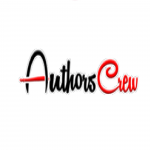An author visiting a bookstore is likely to be overwhelmed by the level of creativity displayed in the book covers and astounded at how her own will stand out. It will be required to in some fashion.
By now, everyone knows that readers make visual purchases. While seeking familiarity, they also hunger for a surprise—for something novel and energizing. They desire a book they can be pleased to read on their e-reader or hold while riding the metro. A good book design must convey that the pages inside are worth a reader's time and attention because so many books are created each year.
The Four Steps Of The Book Design Process:
It's time to begin the design process now that you have all the data in one location!
1. Recognize The Components Of A Cover.
The front cover, the back cover, and the spine are the three required components of a book cover. The pages of a paperback book are cut to size, pasted, and covered in paper. The pages of a hardback book are stitched or adhered to a cardboard "case," which is then coated in fabric or paper. The book has a paper cover that encircles it and has flaps on both sides. Endpapers are a gorgeous additional set of pages that designers can use to finish off a book project when you open a hardcover book and see colored or printed pages adhered to the boards.
2. Market Research
Consider the following rules: Paperback sales of genre books are higher than those of hardcover sales of literary fiction, thrillers, and biographies. Paperback is required if the book is intended to be taken on a plane or to the beach. Libraries favor hardcovers.
3. Determine The Design's Course
Next, you should think about how your design direction will mesh with the author's goal for her book. There are many lovely books available, but not every design will suit every book. Think about the publisher's or author's suggestions. Create a Pinterest board with similar books that have appealing covers and book bundles. Visit a nearby bookstore and hold books to feel the various paper thicknesses and materials. Make notes about the things you like and dislike since, if you run into a block throughout the design process, that information may come in handy.
4. Pick Fonts And Visuals
One of the best things about book covers is that practically every type of graphic design may be used. The designer's task is to produce a cover that captures all the fantastical realms that the author's words conjure because writers have such vivid imaginations.
This has the drawback that it can be difficult to define a specific style. On book covers, there may be a picture, an illustration, or an abstract pattern. They may include everything from minimalist, contemporary lettering to whimsical drawings.
You Are Prepared To Create A Book Cover.
------
Every author's desire is to have their creative vision materialise as a stunning book cover design service. I hope this gives you the courage to take on your upcoming book design project.
Related Information
- Reading The Best Graphic Design Books
- How Marketing For A Self-Published Book Differs
- Guide and New For Self-Publishing Services 50% OFF
- Self-Publishing Guide for Beginners: How to Publish a Book
- Why Pick a Well-Known Book?
- Strong Advice for Writing Your First Hit Book
- From Our Staff Of Professional Ghostwriters, Hire A Business Writer
- Why Should You Utilise Expert Book Marketing Services?
- Take Advantage of Our Top-Notch Professional Book Cover Design Services
- Your Protagonist Should Be Introduced on Book Covers






Comments